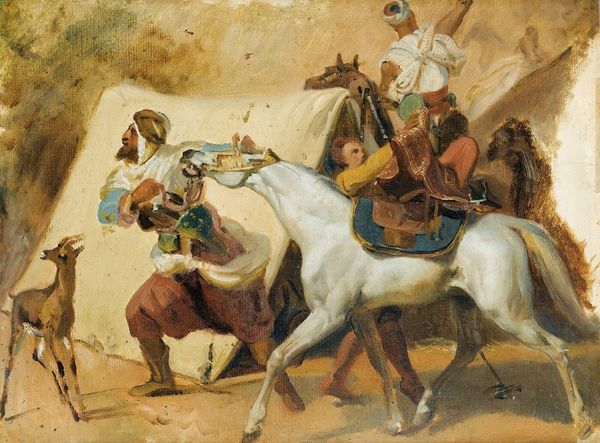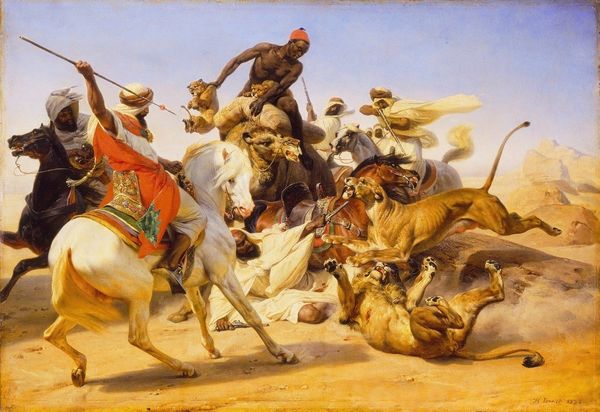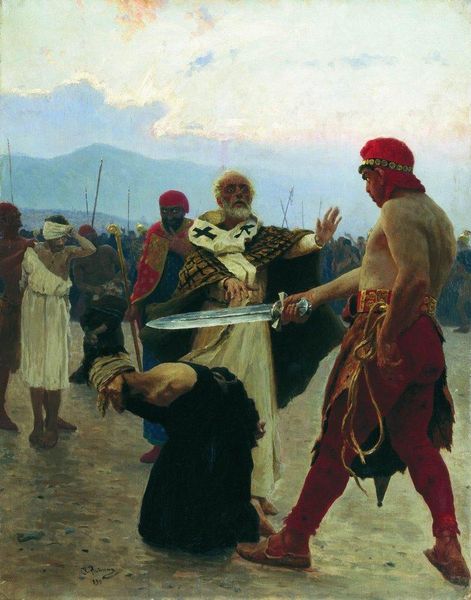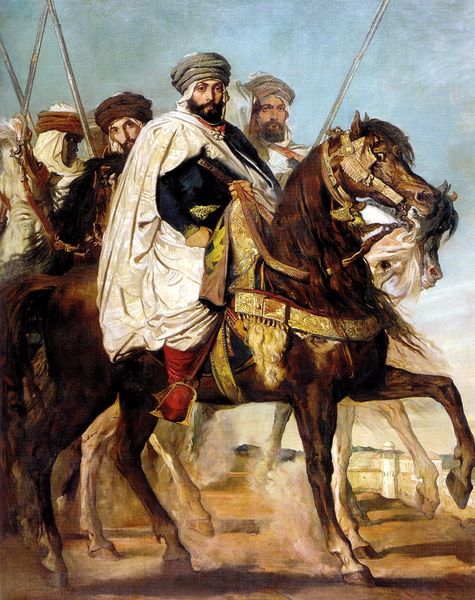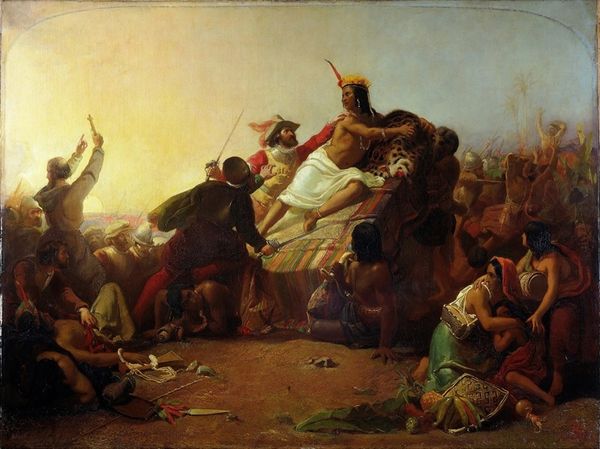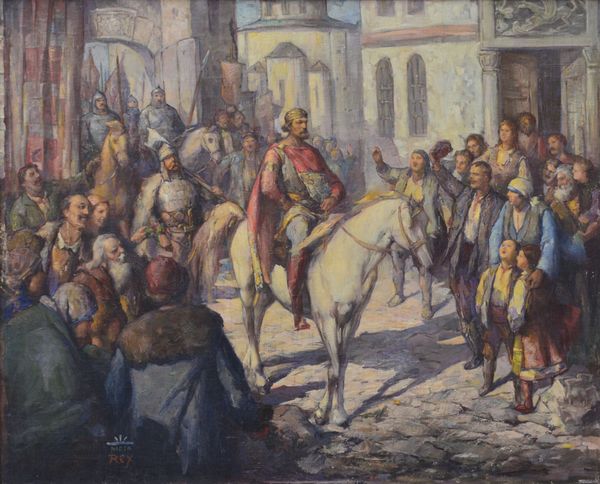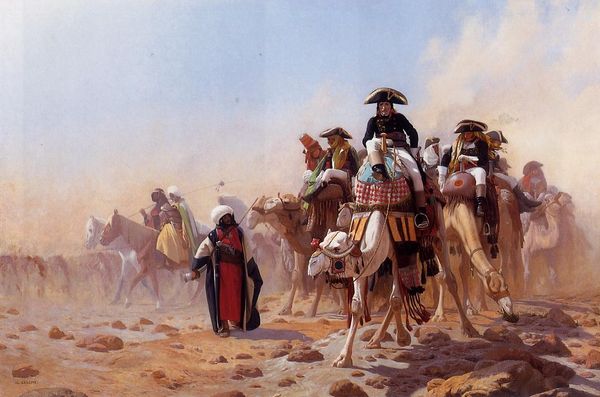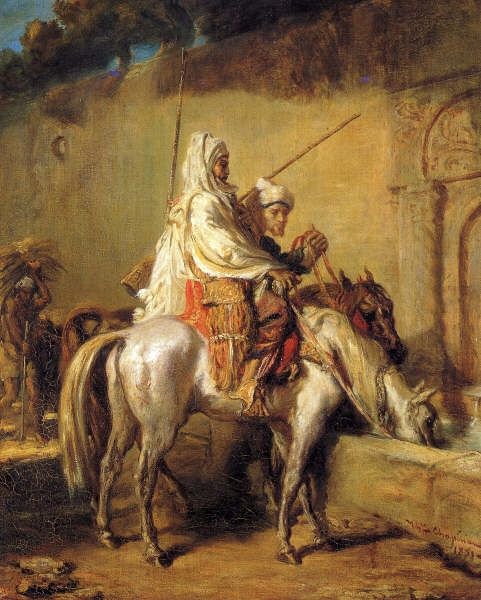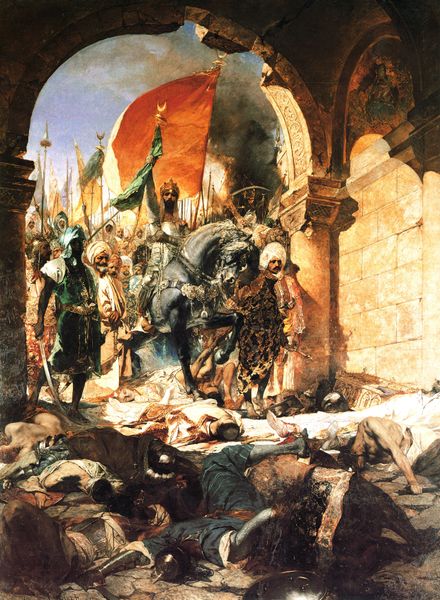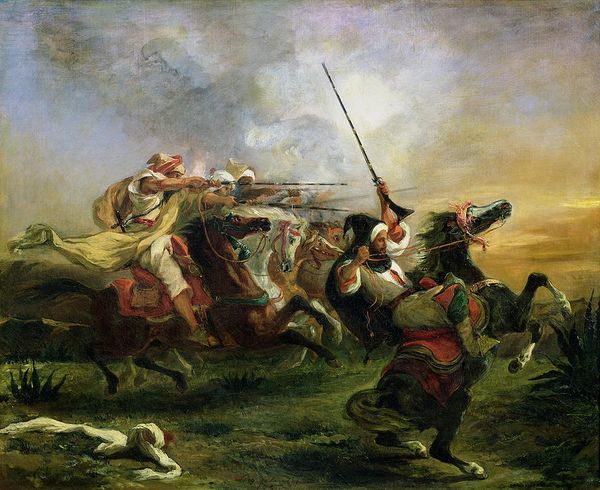
painting, oil-paint
#
narrative-art
#
painting
#
oil-paint
#
figuration
#
oil painting
#
romanticism
#
orientalism
#
cityscape
#
genre-painting
Copyright: Public domain
Editor: Okay, next up is "The Turkish Patrol," an oil painting from 1831 by Alexandre-Gabriel Decamps. It depicts a group of armed men in what appears to be a Middle Eastern city. The figures seem to be in motion, maybe fleeing or charging. It feels chaotic and dynamic. What strikes you about this piece? Curator: The allure of Decamps’ "Turkish Patrol" isn’t simply its orientalist depiction but how it manifests the labor involved in artistic creation and its role in broader markets. Think about the materials themselves: pigments ground from specific minerals, linseed oil painstakingly processed – each element has a story of extraction, trade, and economic value. The very act of painting becomes a process tied to tangible resources and systems. Editor: So, beyond just the subject matter, you're interested in the literal materials that make it up? Curator: Precisely! How are we complicit in a system of image-making where even the exotic "other" is transformed into a commodity? The very 'brushstrokes' speak volumes about the socio-economic machine churning beneath its surface. It even forces you to look at art consumption and its contribution to such practices. Consider Decamps' labor and those employed in supply - a global web of industry feeding artistic production, all packaged into an object for consumption. Editor: That makes me think about the exoticism being sold to the Western gaze, manufactured almost. How would that affect our viewing of this painting today? Curator: Absolutely. It shifts from passive observation to critical examination. It compels us to question the narrative not only within the frame but of those contributing to its creation – from artisan to consumer, how the cycle perpetuates representations embedded in historical inequities. The painting itself then acts as evidence of a complex global exchange system. Editor: I see now. It's less about the romanticism of the scene and more about understanding its existence as a product of a certain time and economic structure. Fascinating! Curator: Indeed! A vital component. Looking closely not just *at* the art, but *through* it, towards the forces shaping its very existence.
Comments
No comments
Be the first to comment and join the conversation on the ultimate creative platform.
